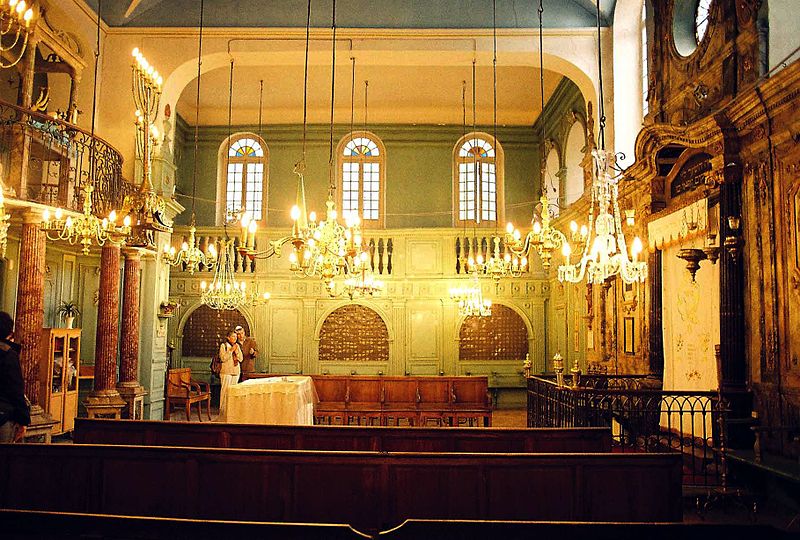Carpentras had a Jewish population when it was yielded to the papacy by the king of France in 1274. In the fourteenth century, the Jewish quarter on rue Fournaque, near the town walls, was home to ninety families.

In 1459, it was sacked by rioters, and sixty people were killed. The community was forced to move to rue des Muses in the town center, which became rue des Juifs, a carriere closed off at both ends by gates. During the fourteenth century, Jews lived mainly from trading agricultural products and money lending. A census in 1473 revealed sixty-nine Jewish families living in Carpentras. In 1523, Jacopo Sadoleto, the bishop of Carpentras, imposed restrictions on their activities, and the community shrank down considerably. After the expulsions of 1570 and 1593, only a few families remained, but in 1669, when the small communities of Comtat Venaissin were put in the four carrieres, the number rose to eighty-three families, of 298 persons.
New restrictions were imposed throughout the eighteenth century. There was, notably, a long, drawn-out conflict over the construction of the synagogue. Begun in 1741 in answer to the growing number of believers, the construction proceeded swiftly until, in 1757, the bishop obtained authorization from Rome to reduce the building to its medieval dimensions. He himself set about the demolition with the help of masons. The Jews protested, and the conflict dragged on until 1784, when a compromise was reached as to the acceptable dimensions. At the end of the eighteenth century, the community numbered some 2000 members. Most of them lived modestly, or even in poverty. Some, though, were rich, such as Jacob de la Roque and Abraham Crémieux. During the Revolution, the synagogue was a Jacobin meeting place. It returned to being a place of worship in 1800.
The community in Carpentras produced few renowned intellectuals. Most were doctors and poets. Mardochée Astruc, from Carpentras, wrote the play La Reine Esther with Jacob de Lunel in the eighteenth century. It inspired Esther de Carpentras, a comic opera with a libretto by Armand Lunel that was presented in Paris in 1938.
The synagogue was registered as a historical monument in 1924. A monumental staircase leads to the place of worship, which is organized on two levels: the meeting room with the tabernacle and the gallery/tribune with the tevah. The interior decoration is remarkable. Note the blue ceiling spangled with stars, the wooden paneling, the gilding on the tabernacle, the columns supporting the tevah, the Chair of Elijah, and the chandeliers and candlesticks. In the basement, elements from the medieval construction are still in place: the matzoh oven, the mikvah, and the women’s prayer room, where a specially chosen rabbi led the prayers in Judeo-Provençal (Judeo-Comtadin).
The carriere and the Place de la Juiverie were destroyed in the nineteenth century.